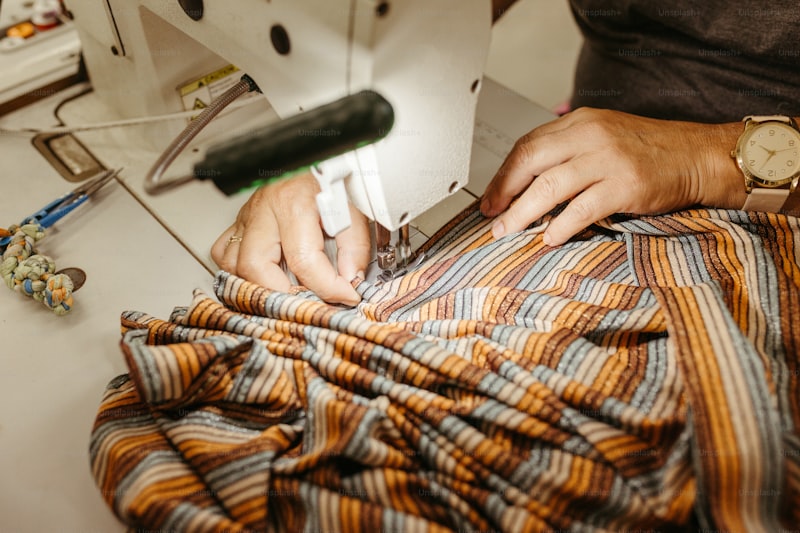Understanding Fabric Care and Maintenance: A Comprehensive Guide
Introduction
In an age where appearance matters, understanding the intricacies of fabric care and maintenance is essential. With a myriad of fabrics available, each requiring specific care methods, knowing the do's and don'ts can prolong the life of your garments. This article will delve into the fundamental aspects of fabric care, ensuring your wardrobe remains in pristine condition.
Why Fabric Care is Important
Fabric care isn't just about maintaining aesthetics; it's also about preserving the integrity of the fabric. Proper care can prevent wear and tear, fading, and even odors that can arise from improper maintenance. Let's explore the main reasons why fabric care is crucial:
- Longevity: Proper care can greatly extend the lifespan of your garments.
- Quality Retention: Educated care prevents fabric degradation, ensuring quality.
- Cost-Effectiveness: Investing in care can save money on replacements and repairs.
- Environmentally Friendly: Maintaining clothes reduces waste and promotes sustainability.
Understanding Different Fabrics
Before diving into care techniques, it's essential to understand the types of fabrics commonly used in clothing and household items:
| Fabric Type | Characteristics | Common Uses |
| Cotton | Soft, breathable, and absorbent | Shirts, denim, bedding |
| Wool | Warm, elastic, with natural moisture-wicking properties | Coats, sweaters, blankets |
| Synthetic | Durable, often wrinkle-resistant | Sportswear, underwear, outdoor gear |
| Silk | Lustrous, soft, and lightweight | Luxury clothing, scarves, ties |
Basic Fabric Care Guidelines
Each fabric type comes with unique care requirements. Here are some general guidelines to follow:
- Read Labels: Always check care labels for washing, drying, and ironing instructions.
- Wash with Care: Use cold water for delicates and hot water for cotton. Consider using a gentle detergent.
- Avoid Overloading: Do not overload washing machines. It can lead to uneven cleaning and fabric damage.
- Dry Properly: Line dry when possible to prevent shrinking and fading.
- Iron with Caution: Use appropriate heat settings for each fabric type to avoid burns or melting.
Advanced Care Techniques
For those who want to ensure their fabrics remain in top condition, consider these advanced care techniques:
1. Spot Cleaning
For stubborn stains, spot cleaning is often preferable to a full wash. Use a cloth and a mild detergent solution to gently blot stains instead of rubbing them.
2. Fabric Refresh Sprays
Invest in fabric refresh sprays to minimize odors between washes. These sprays can also help maintain freshness.
3. Professional Cleaning
For delicate fabrics like silk or intricate garments, consider professional cleaning services that specialize in fabric care.
Seasonal Fabric Maintenance
Adjustments in care may be necessary depending on the season. Here are some seasonal tips:
Spring and Summer
Spring calls for lighter fabrics that may require more frequent washing. Invest in garment bags for delicate items during storage.
Fall and Winter
Wool and heavier fabrics come into play. Ensure wool items are stored with cedar chips to repel moths.

Common Myths About Fabric Care
As with many subjects, fabric care is surrounded by common misconceptions. Here are some myths debunked:
- Myth 1: All fabrics can go in the dryer.
This is false; many fabrics shrink or lose their shape in high heat. - Myth 2: Washing removes all bacteria.
Some bacteria can survive typical washing conditions, particularly on heavily soiled fabrics. - Myth 3: You only need to wash clothes when they look dirty.
Odors and bacteria can linger even when clothes appear clean.
Conclusion
Understanding fabric care and maintenance is vital for anyone looking to extend the life of their wardrobe and household items. From the types of fabrics to care techniques, following these guidelines will ensure that your items remain vibrant and durable. Remember, investing time in fabric care not only saves you money but also contributes to a more sustainable environment. For best practices, always refer to garment labels and when in doubt, consult with fabric care professionals. With mindful maintenance, you can keep your favorite pieces looking their best for years to come.
Lastly, stay informed about the latest fabric care advancements to adapt your methods accordingly. Happy caring!